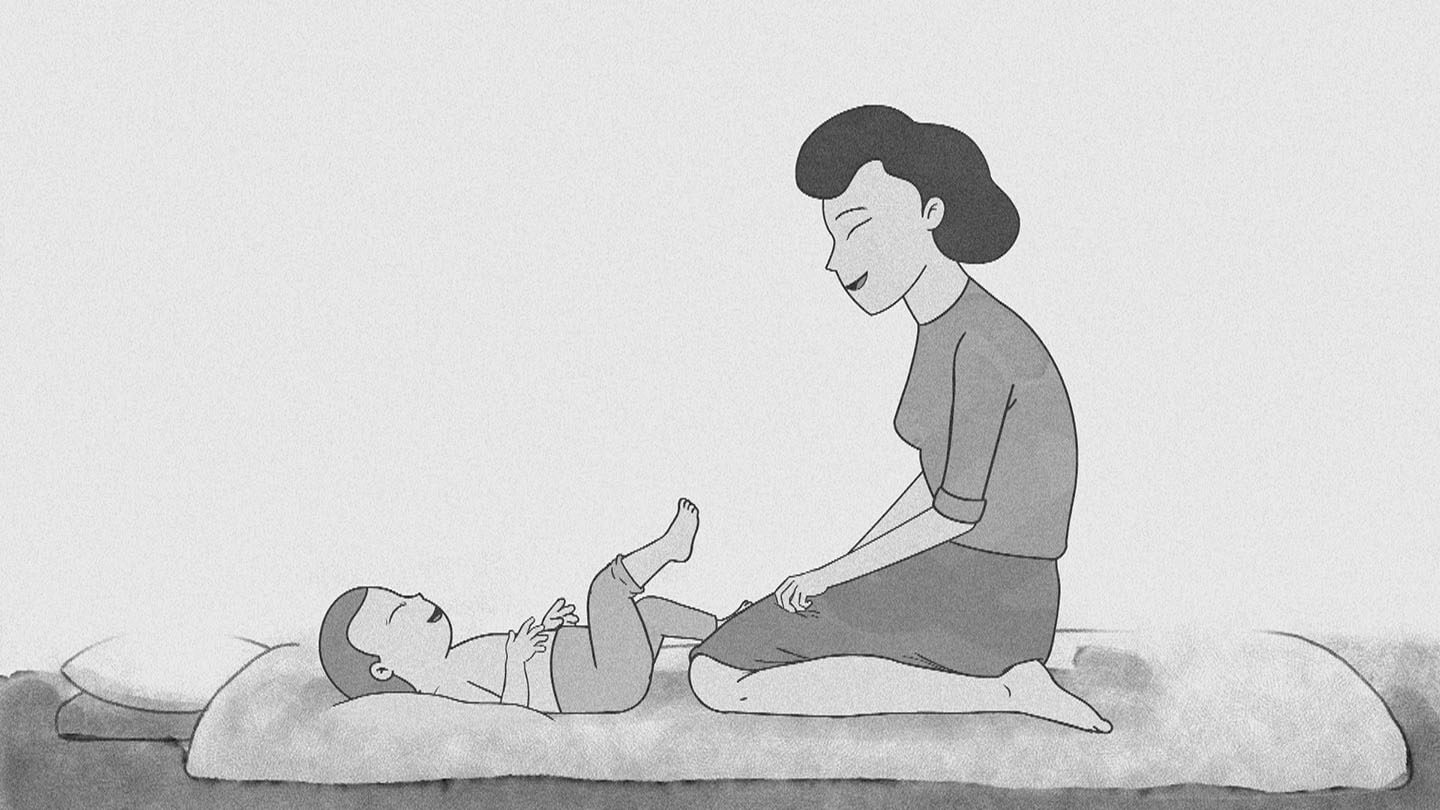Julia Morizawa’s Dragonfly, a 14-minute WWII animation, details the effects of the Great Tokyo Air Raid on Japan through the story of a family that faces obliteration. Told through the lens of memory, the film delves into the experience of personal and collective destruction as the skies seemed to turn malevolent, fire raining down on a city of civilians.
The most striking scene of the film occurs as the family of three runs for cover along with their neighbours. The fire seems to chase them, yawning to consume everything that falls in its path. When running bodies emerge out of the monstrous fire in the background, the desperation is visceral. However, the film envelops this desperation with hope. The story begins with a little girl finding her family’s graveyard, and it ends with her happily returning home with her mother. In between, the acutest grief and horror threaten to engulf all.
The little girl in question is Sumiko (Miya Kodama), ten years old in 1956, living in the countryside with her family. Ten years have passed since the US dropped 1,665 short tons of bombs on Tokyo. The lush fields around her house have nothing in resemblance with the flaming city streets a decade ago. She follows a red dragonfly, all glee and laughter, too young to be scathed by war. The sound of her giggles draws her mother, Yoshiko (Morizawa). With Yoshiko as its anchor, the film relocates to the past, presented in black and white. Only fire will have colour henceforth, and all the more vivid is the nightmare. With her husband, Susumu (Thomas Isao Morinaka) next to her and her child on her back, Yoshiko flees her home to escape the bombs. Everyone around her is either running or burning.
Though there is a certain representational restraint in its art style, the horror is not opaque to the viewers. When a significant character’s death is revealed, the simplicity turns the sight into something particularly chilling. The monochrome palette is overwhelmed by red, orange, and yellow. Black is transformed into charred bodies. The swelling score is nearly resonant with the cries of the dying and the survivors. In all, the incomprehensible scale of death and destruction overtakes the film’s childlike animation.
Dragonfly presents an almost artificially sweet happiness in the character of Sumiko, contrasting it with the naked horror contained within the graveyard. Though the film points towards hope, resilience and regeneration, one is left to ponder the dynamics of moving on.
Watch Dragonfly Short Film Trailer
Dragonfly: The Memory of War and Its Echoes in Time
-
Direction
-
Cinematography
-
Screenplay
-
Editing
-
Music
